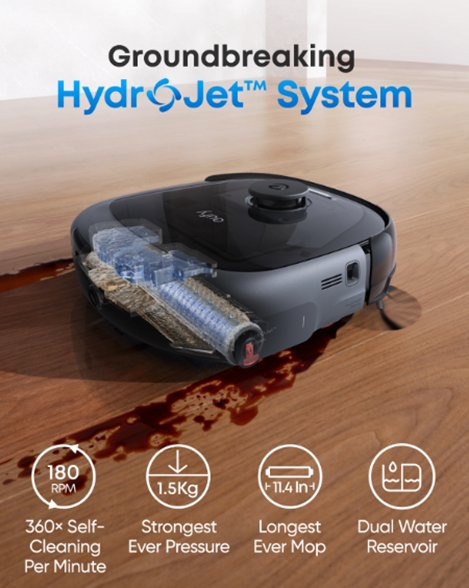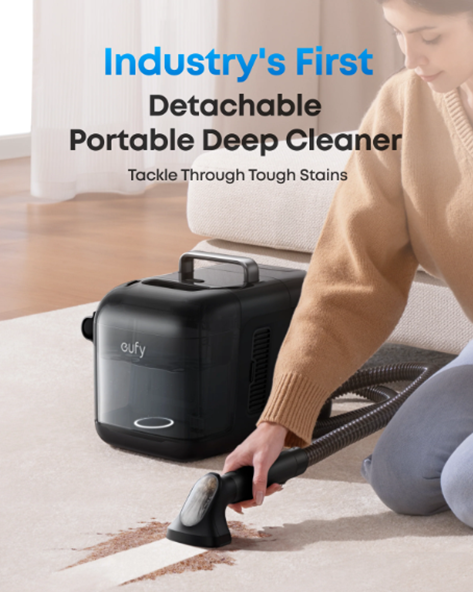August 7, 2025
How Smart Are Robot Vacuums with AI Mapping?
Robot vacuums have evolved significantly, becoming smarter with each upgrade. The integration of AI mapping technology marks a turning point in how these gadgets function. Gone are the days when robotic vacuums aimlessly bumped into walls and furniture, resulting in random cleaning paths. Today, AI mapping empowers them to learn the layout of your home, devise the most efficient cleaning routes, and adapt to changes. This advanced technology is a game-changer, redefining how households perceive and utilize automated cleaning. Understanding how this technology works can help homeowners make informed decisions. This article delves deep into AI mapping in robot vacuums, examining the nuances of their intelligence and the range of features offered. Whether you’re contemplating a purchase or merely curious, this exploration provides valuable insights into the new age of smart cleaning.

Understanding AI Mapping Technology
What Is AI Mapping in Robot Vacuums?
AI mapping in robot vacuums refers to the process by which these devices create detailed maps of the space in which they operate. Utilizing sensors, cameras, and sometimes even lasers, robot vacuums with AI mapping can identify the layout of a room, noting obstacles such as furniture, walls, and stairs. This enables the vacuum to plan a cleaning path that effectively covers all areas while avoiding collisions or getting stuck. The AI component allows the gadget to learn and improve the map over time, adapting to changes like moved furniture. Such mapping ensures more efficient cleaning sessions with better coverage and less time required, unlike their non-AI counterparts that typically clean in random or semi-structured patterns.
How AI Navigation Works in Your Home
AI navigation in robot vacuums involves continuous scanning and analysis of the environment. These devices use technologies like LiDAR (Light Detection and Ranging) for precision scanning, capturing thousands of points to form an accurate floor plan. As they move, they update the map with real-time data, adjusting paths for optimal efficiency. Advanced algorithms process this information to create a logical cleaning sequence that maximizes coverage while minimizing battery use. Some models even allow users to designate no-go zones or specific rooms for targeted cleaning. With AI navigation, these vacuums not only dodge obstacles but also learn from them, improving their future performance and enhancing the overall cleaning experience by intelligently navigating various room layouts with ease.
Real-World Intelligence: How Smart Are They Really?
Room Detection, Obstacle Avoidance & Cleaning Logic
Robot vacuums with AI mapping technology demonstrate incredible real-world intelligence through their capacity to detect rooms, avoid obstacles, and employ logical cleaning sequences. Room detection allows these vacuums to recognize different spaces, enabling them to clean specific areas as needed. This is often facilitated by built-in cameras and advanced sensors that assess the environment meticulously. The obstacle avoidance feature ensures that vacuums skirt around furniture, walls, and other impediments, which minimizes disruptions and enhances cleaning efficiency. Furthermore, the intelligent cleaning logic means that these devices optimize their routes based on room size and shape, avoiding redundant passes and focusing on uncovered areas. The result is a thorough, efficient cleaning experience that enhances convenience for users, proving that today’s robot vacuums are far smarter than their predecessors.
Smart Features from eufy Robot Vacuums
eufy, a well-regarded name in the realm of smart cleaning devices, offers robot vacuums equipped with cutting-edge AI features. These vacuums come with technology such as AI Map Technology 2.0, which intensively scans and remembers the specific layout of your home. eufy’s vacuums also support multi-floor mapping, beneficial for homes with more than one level. Moreover, their smart obstacle avoidance feature uses a combination of infrared and precision navigation sensors to prevent accidents or collisions. Some models incorporate voice assistant compatibility, which allows users to control the vacuum using platforms like Amazon Alexa or Google Assistant. Additionally, eufy vacuums often provide mobile app integration, ensuring that users can schedule cleanings, view maps, and adjust settings remotely. This array of innovative features exemplifies the advanced capabilities of modern robot vacuums, underscoring the impressive strides made in smart technology.

Performance Comparison: AI vs. Non-AI Robot Vacuums
Mapping Accuracy and Path Efficiency
When comparing AI-powered vacuums to non-AI models, one of the most noticeable differences is in mapping accuracy and path efficiency. AI-enabled vacuums utilize advanced technologies like LiDAR and SLAM (Simultaneous Localization and Mapping) to create highly accurate floor plans. This results in precise navigation, allowing these vacuums to clean more systematically and cover nearly all available spaces in a room. Non-AI vacuums, on the other hand, tend to rely on bump-and-run technology, leading to random or semi-structured cleaning paths which can result in missed areas or repeated cleaning of the same spot. The superior mapping accuracy of AI models reduces cleaning time and provides users with a more satisfying cleaning experience, effectively outperforming their non-AI counterparts in both speed and thoroughness.
Cleaning Speed, Memory, and Repeated Routes
AI robot vacuums clearly excel in cleaning speed, memory, and route precision compared to non-AI versions. The AI models are designed to remember the layout of rooms and adapt quickly to changes, allowing them to efficiently plan their cleaning routes. As a result, they cover designated areas faster and with minimal overlap. Non-AI vacuums, although occasionally efficient in small spaces, often spend more time cleaning due to random navigation patterns and frequent repeats of paths they have already cleared. This leads to longer operational times and sometimes missed spots. The memory capabilities of AI vacuums also mean that they can resume cleaning from where they stopped after a charge, a feature non-AI models commonly lack. Hence, consumers looking for time-saving and effective cleaning may find AI models a worthy investment, underscoring their superiority in daily performance metrics.
Choosing the Right AI Robot Vacuum
What to Look For in Smart Robot Vacuums
When selecting the best robot vacuum, key factors to consider include mapping technology, battery life, and smart features. Advanced mapping capabilities, like LiDAR, ensure accurate and efficient navigation. Battery life is crucial for uninterrupted cleaning sessions, especially in larger homes. Look for models that offer recharge and resume options. Smart features matter too—voice control integration, app compatibility, and customizable cleaning zones enhance convenience and user experience. Noise levels could be another deciding factor for homes with pets or small children. Additionally, consider the support and software updates provided by the manufacturer, as these impact long-term performance and adaptability to new features or technologies. An informed choice based on these criteria will ensure that your AI robot vacuum meets your specific needs and lifestyle.
Conclusion
AI mapping has revolutionized the world of robot vacuums, turning them into intelligent cleaning partners. These devices now efficiently navigate homes, avoid obstacles, and remember layouts, offering enhanced cleaning experiences. As we’ve explored, AI-driven models shine brighter when compared to their non-AI counterparts, excelling in navigation accuracy, speed, and adaptability. eufy’s AI vacuum models, with their state-of-the-art features, exemplify these transformative changes. For those looking to invest in a robot vacuum, understanding the nuances of AI mapping and considering individual needs are crucial. By focusing on essential features like mapping accuracy, battery life, smart integration, and noise levels, homeowners can make an informed decision. As technology continues to evolve, AI mapping in robot vacuums promises even more advancements, ensuring that homes remain cleaner with minimal effort. Embracing this innovative technology the right way can lead to smarter, cleaner living spaces.
